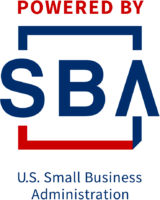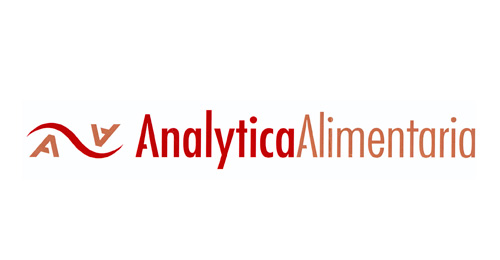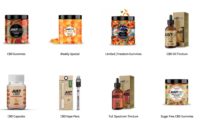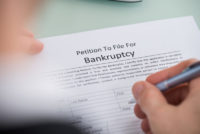In our previous posts, we discussed why state-legal medical and recreational cannabis businesses are likely not eligible to receive federal financial assistance under the Paycheck Protection Program due to the fact that these businesses are inherently engaged in federally illegal activities.
While our view has not necessarily changed, this post is intended to highlight the implications of a recent temporary restraining order prohibiting the U.S. Small Business Administration (SBA) from excluding strip clubs from receiving financial relief under the Coronavirus Aid, Relief, and Economic Security Act (CARES Act or the “Act”).
The Case for Strip Clubs to Receive SBA Assistance
The Facts
Last month, DV Diamond Club of Flint LLC (dba Little Darlings) sued the SBA in the U.S. District Court for the Eastern District of Michigan claiming, among other things, that the agency exceeded its authority under the CARES Act by excluding otherwise eligible strip clubs from receiving Paycheck Protection Program (PPP) loans.

On April 6, 2020, Little Darlings, an adult entertainment establishment licensed in Flint, Michigan, applied for a PPP loan to mitigate its business losses as a result of the COVID-19 pandemic.
Due to rapidly diminishing PPP funds and the rejection of applications submitted by other seemingly eligible adult entertainment establishments, Little Darlings filed a claim against the SBA alleging that the agency’s April 15, 2020 “Business Loan Program Temporary Changes; Paycheck Protection Program “ Rule (the Interim Rule) exceeded the SBA and Department of Treasury’s regulatory authority under the CARES Act.
The Interim Rule, in part, provided that:
“Businesses that are not eligible for PPP loans are identified in 13 CFR 120.110 and described further in SBA’s Standard Operating Procedure (SOP) 50 10, Subpart B, Chapter 2, except that nonprofit organizations authorized under the Act are eligible.” 1
The Interim Rule effectively clarified that those businesses that “are identified” in 13 C.F.R. § 120.110 (the Ineligibility Rule) and “described further” in Standard Operating Procedure 50 10 5(K) are “not eligible for PPP loans.”
The Ineligibility Rule – 13 C.F.R. §120.110
In 1996, the SBA declared that certain types of businesses are not eligible to participate in SBA lending programs. Under the Ineligibility Rule (codified at 13 CFR § 120.110), certain sexually oriented businesses2 and “businesses engaged in any illegal activity,”3 in addition to other enumerated businesses, were barred from receiving SBA financial assistance.
The SOP
In 2019, the SBA issued “Standard Operating Procedure for Lender and Development Company Loan Programs 50 10 5(K)” (the SOP) providing guidance to lenders regarding how to administer the Ineligibility Rule. The SOP explained that certain business types such as “Businesses Providing Prurient Sexual Material”i and “Businesses Engaged in any Illegal Activity,ii” among others, may be “ineligible” to participate in SBA programs.4
The Argument
 In addition to arguing that the SBA’s regulations violated Little Darlings’ Constitutional rights under the First and Fifth Amendments, Little Darlings alleged that the SBA lacked authority to promulgate regulations clarifying what businesses were eligible for PPP loans, as Congress intended to “increase eligibility” for PPP loans under the CARES Act by establishing only two criteria for PPP eligibility. Moreover, Little Darlings relied on the fact that Congress explicitly provided that “any business concern . . . shall be eligible” for a PPP loan if it met the criteria identified in 15 U.S.C. § 636(a)(36)(D)(i) of the CARES Act.
In addition to arguing that the SBA’s regulations violated Little Darlings’ Constitutional rights under the First and Fifth Amendments, Little Darlings alleged that the SBA lacked authority to promulgate regulations clarifying what businesses were eligible for PPP loans, as Congress intended to “increase eligibility” for PPP loans under the CARES Act by establishing only two criteria for PPP eligibility. Moreover, Little Darlings relied on the fact that Congress explicitly provided that “any business concern . . . shall be eligible” for a PPP loan if it met the criteria identified in 15 U.S.C. § 636(a)(36)(D)(i) of the CARES Act.
As a result, Little Darlings sought a Temporary Restraining Order (TRO), Preliminary and Permanent Injunction enjoining the SBA from enforcing or utilizing the Ineligibility Rule or SOP to exclude otherwise eligible PPP loan applicants. As part of the orders, the SBA would be required to immediately notify all SBA lending banks to immediately discontinue utilizing 13 CFR § 120.110 or the SOP as criteria for determining PPP eligibility and to process all PPP loan applications without reference to such regulations and procedures.
On May 11, 2020, U.S. District Judge Matthew Leitman granted Little Darlings’ TRO blocking the SBA from enforcing the Ineligibility Rule and SOP finding that Congress intended to provide temporary paycheck support to “all Americans employed by all small businesses that satisfied the two eligibility requirements – even businesses that may have been disfavored during normal times.”5
Notably, the Sixth Circuit refused to overturn the TRO reasoning that withholding loans from previously “ineligible” businesses, such as strip clubs, conflicts with the broad interpretation of the CARES Act.
Similar cases have also been brought in Illinois and Wisconsin on behalf of adult entertainment businesses that have been denied PPP relief. Notably, on April 23, 2020, the U.S. District Court for the Eastern District of Wisconsin issued a comparable injunction blocking the SBA from denying federal financial assistance to multiple Wisconsin gentlemen clubs.
Implications for Cannabis Businesses
As we previously discussed, one of the largest hurdles for cannabis businesses to receive federal financial assistance from the SBA is that applicants must make a good faith certification that they are not engaged in any federally illegal activity.6
 The SBA has historically relied on both the Ineligibility Rule and SOP to uphold its position that “illegal activities” include both Direct Marijuana Businessesiii and Indirect Marijuana Businessesiv that “make, sell, service, or distribute products or services used in connection with illegal activity.”7
The SBA has historically relied on both the Ineligibility Rule and SOP to uphold its position that “illegal activities” include both Direct Marijuana Businessesiii and Indirect Marijuana Businessesiv that “make, sell, service, or distribute products or services used in connection with illegal activity.”7
However, should Judge Leitman’s interpretation hold true and continue to prohibit the SBA from utilizing the Ineligibility Rule or the SOP as criteria for determining PPP eligibility, cannabis businesses (namely Indirect Marijuana Businesses8) may be eligible to receive PPP loans so long as they satisfy the eligibility requirements identified in the CARES Act.
Although it would ordinarily be absurd to conclude that Congress intended to provide financial assistance to businesses operating in clear violation of federal law (such as Direct Marijuana Businesses), the U.S. District Court for the Eastern District of Michigan and the Sixth Circuit have concluded that the expansive definition of “any business concern” in the CARES Act is not subject to SBA limitations.

As Judge Leitman elaborated in his May 11, 2020 order:
“Congress’s decision to expand funding to previously ineligible businesses is not an endorsement or approval of those businesses. Instead, it is a recognition that in the midst of this crisis, the workers at those businesses have no viable alternative options for employment in other, favored lines of work and desperately need help. It is not absurd to conclude that in order to support these workers, Congress temporarily permitted previously excluded businesses to obtain SBA financial assistance.”
Therefore, although we believe it to be highly unlikely that cannabis businesses will actually receive PPP loans due to their continued violation of the Controlled Substances Act (CSA) and need to make a good faith certification that they are not engaged in any federally illegal activity, the door has been opened for certain types of cannabis businesses to potentially receive PPP loans should the SBA remain prohibited from relying on the Ineligibility Rule or SOP to disqualify otherwise eligible applicants.
References
- See Interim Rule, p. 2812
- 12 C.F.R. § 120.110(p) Businesses which: (1) Present live performances of a prurient sexual nature; or (2) Derive directly or indirectly more than de minimis gross revenue though the sale of products or services, or the presentation of any depictions or displays, of a prurient sexual nature
- 12 C.F.R. § 120.110(h) Businesses engaged in any illegal activity.
- See the 2019 SOP, ECF No. 12-11, PageID.570
- Specifically, U.S. District Judge Matthew F. Leitman reasoned that: “While Congress may have once been willing to permit the SBA to exclude these businesses from its … lending programs, that willingness evaporated when the COVID-19 pandemic destroyed the economy and threw tens of millions of Americans out of work…” In response to the SBA’s argument that such an interpretation would lead to “absurd results,” Judge Leitman stated: “[T]hese are no ordinary times, and the PPP is no ordinary legislation. The COVID-19 pandemic has decimated the country’s economy, and the PPP is an unprecedented effort to undo that financial ruin.”
- See Borrower Application Form, page 2; see also COVID-19 Economic Injury Disaster Loan Application
- See SOP 50 105(K) at Ch. 2(III)(A)(8).
- It is our position that Indirect Marijuana Businesses (or non plant-touching businesses that service state licensed marijuana establishments) will have an easier time alleging that they are not operating in violation of federal law than those businesses whose existence is inherently premised on cultivating and distributing marijuana in violation of the Controlled Substances Act
i Businesses Providing Prurient Sexual Material (13 CFR § 120.110(p))
- A business is not eligible for SBA assistance if:
- It presents live or recorded performances of a prurient sexual nature; or
- It derives more than 5% of its gross revenue, directly or indirectly, through the sale of products, services or the presentation of any depictions or displays of a prurient sexual nature.
- SBA has determined that financing lawful activities of a prurient sexual nature is not in the public interest. The Lender must consider whether the nature and extent of the sexual component causes the business activity to be prurient.
ii Businesses Engaged in any Illegal Activity (13 CFR § 120.110(h))
- SBA must not approve loans to Applicants that are engaged in illegal activity under federal, state, or local law. This includes Applicants that make, sell, service, or distribute products or services used in connection with illegal activity, unless such use can be shown to be completely outside of the Applicant’s intended market.
- Marijuana-Related Businesses:
- Because federal law prohibits the distribution and sale of marijuana, financial transactions involving a marijuana-related business would generally involve funds derived from illegal activity. Therefore, businesses that derive revenue from marijuana-related activities or that support the end-use of marijuana may be ineligible for SBA financial assistance.
iii “Direct Marijuana Business” mean “a business that grows, produces, processes, distributes, or sells marijuana or marijuana products, edibles, or derivatives, regardless of the amount of such activity. This applies to recreational use and medical use even if the business is legal under local or state law where the applicant business is or will be located.”
iv “Indirect Marijuana Business” means “a business that derived any of its gross revenue for the previous year (or, if a start-up, projects to derive any of its gross revenue for the next year) from sales to Direct Marijuana Businesses of products or services that could reasonably be determined to aid in the use, growth, enhancement or other development of marijuana. Examples of Indirect Marijuana Businesses include businesses that provide testing services, or sell or install grow lights, hydroponic or other specialized equipment, to one or more Direct Marijuana Businesses; and businesses that advise or counsel Direct Marijuana Businesses on the specific legal, financial/ accounting, policy, regulatory or other issues associated with establishing, promoting, or operating a Direct Marijuana Business. However … [the] SBA does not consider a plumber who fixes a sink for a Direct Marijuana Business or a tech support company that repairs a laptop for such a business to be aiding in the use, growth, enhancement or other development of marijuana. Indirect Marijuana Businesses also include businesses that sell smoking devices, pipes, bongs, inhalants, or other products if the products are primarily intended or designed for marijuana use or if the business markets the products for such use.”





































